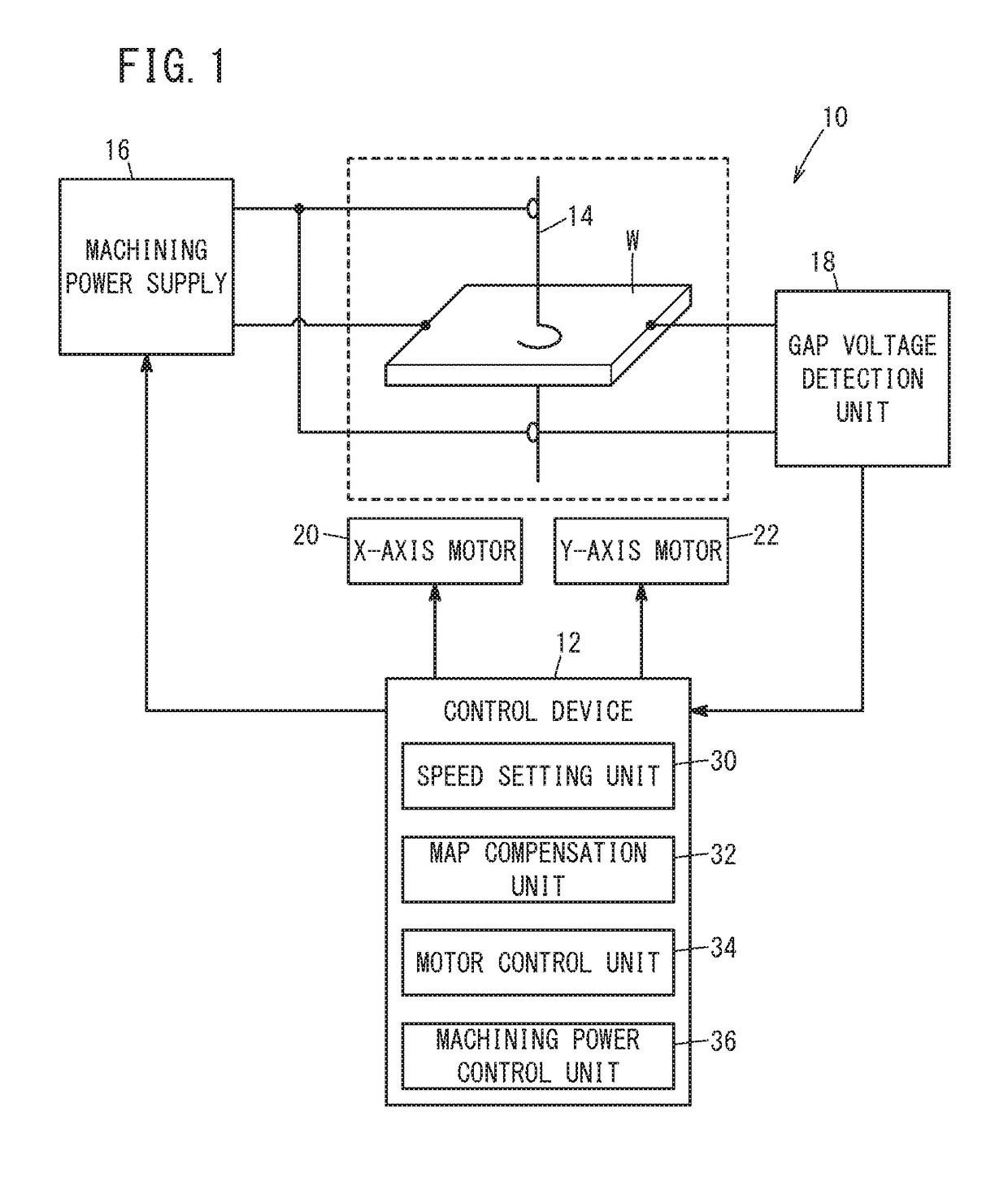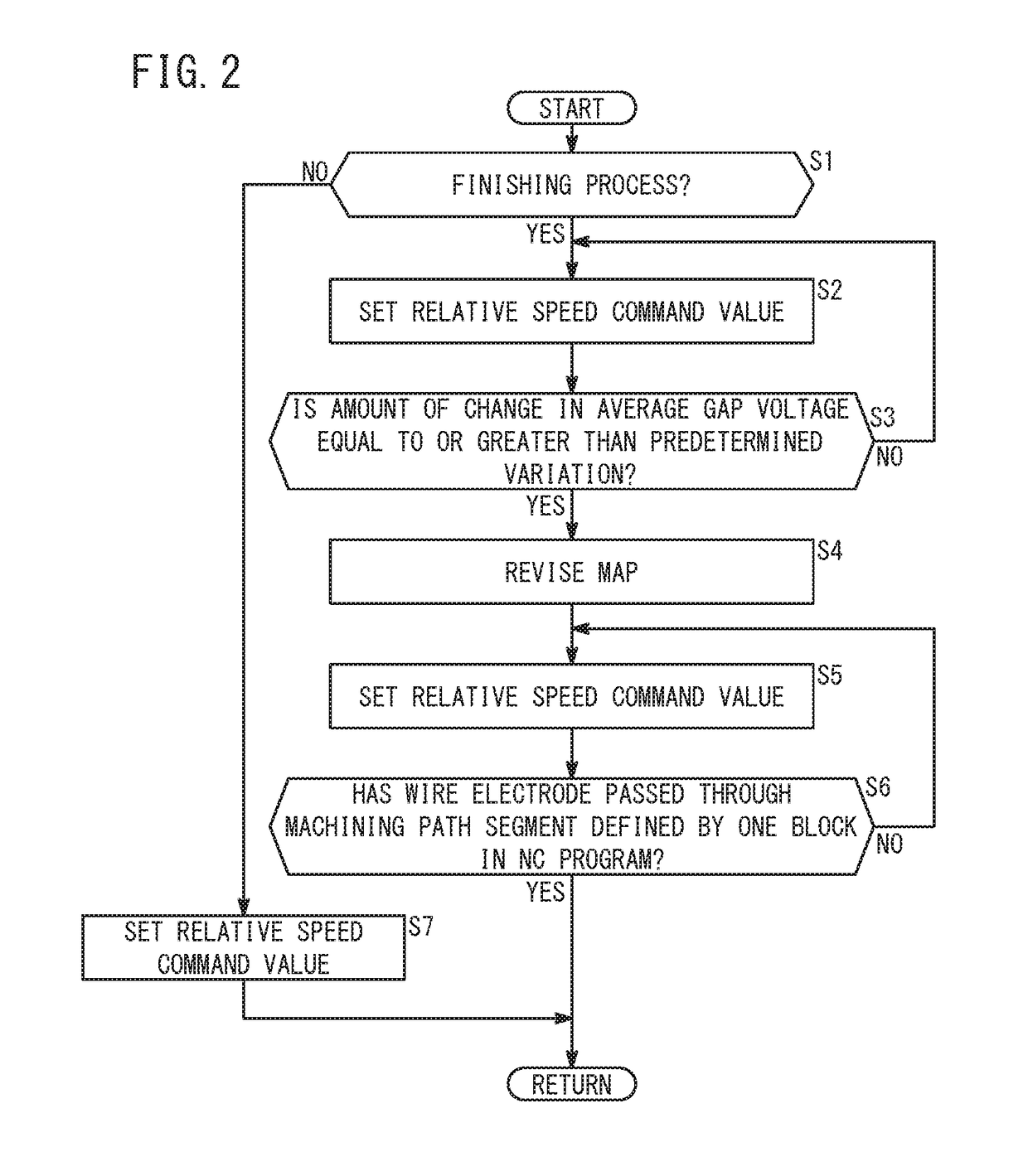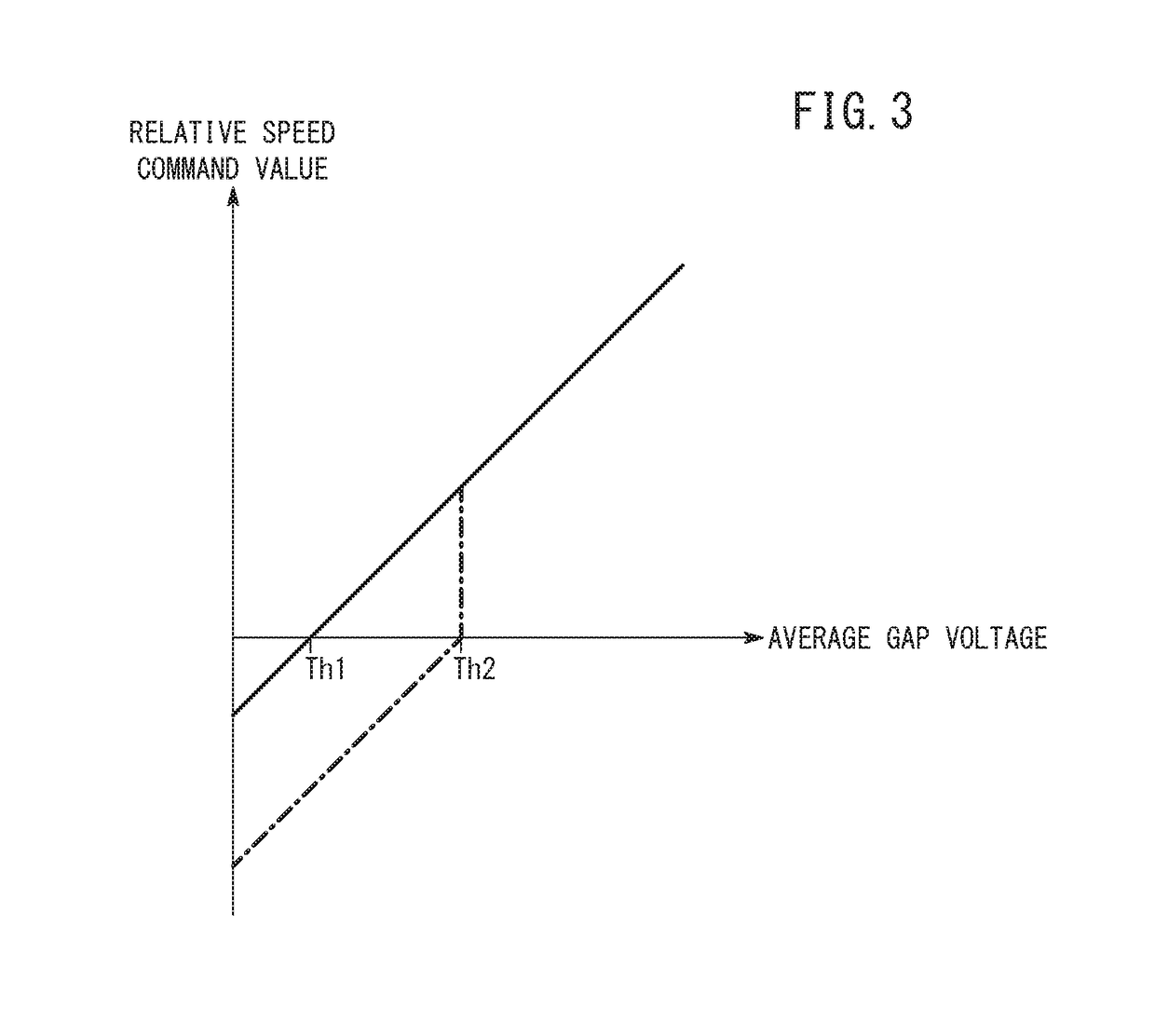Control device for wire electrical discharge machine and control method of wire electrical discharge machine
- Summary
- Abstract
- Description
- Claims
- Application Information
AI Technical Summary
Benefits of technology
Problems solved by technology
Method used
Image
Examples
first embodiment
[Configuration of Wire Electrical Discharge Machine and Control Device]
[0026]FIG. 1 is a schematic diagram showing a configuration of a wire electrical discharge machine 10 and a control device 12 for controlling the wire electrical discharge machine 10. The wire electrical discharge machine 10 is a machine tool that generates electrical discharge by applying voltage across an electrode gap formed between a wire electrode 14 and a workpiece W to thereby perform electrical discharge machining on the workpiece W. The wire electrode 14 is made of, for example, metal material such as tungsten-based, copper alloy-based, and brass-based material. On the other hand, the workplace W is made of, for example, an iron-based material, a superhard material (e.g., tungsten carbide), or the like. The wire electrical discharge machine 10 includes a machining power supply 16 for applying voltage between the wire electrode 14 and the workpiece W, and an gap voltage detection unit 18 for detecting the...
modification 1
[Modification 1]
[0046]In the first embodiment, the relative speed command value is set according to the average gap voltage. However, the reciprocal of the number of discharge pulses per unit time may be used instead of the average gap voltage. Since the frequency of discharge pulses increases as the gap distance decreases, the gap distance and the number of discharge pulses per unit time are highly correlated so that the reciprocal of the number of discharge pulses per unit time may be used in the same manner as the average gap voltage. In this case, as shown in FIG. 10, the number of discharge pulses is detected by using a discharge pulse counting unit 24 instead of the gap voltage detection unit 18 of the first embodiment.
modification 2
[Modification 2]
[0047]As described above, the relationship between the gap distance and the average gap voltage tends to become unstable when the wire electrode 14 machines the inner side of a circular arc. To deal with this, in a machining path segment defined by a block having a predetermined command code (e.g., G02 or G03) in the NC program, when the average gap voltage changes in a decreasing direction and the amount of change in the average gap voltage becomes equal to or greater than a predetermined variation, the backward-movement threshold may be revised to the second threshold Th2 greater than the first threshold Th1.
[0048]Even on a linear machining path segment, there are cases in which the amount of change in the average gap voltage becomes equal to or greater than a predetermined variation. However, the average gap voltage is less likely to fall sharply thereafter. In this case, if the backward-movement threshold is set to the second threshold Th2, the frequency of the w...
PUM
| Property | Measurement | Unit |
|---|---|---|
| Speed | aaaaa | aaaaa |
| Threshold limit | aaaaa | aaaaa |
Abstract
Description
Claims
Application Information
 Login to View More
Login to View More - R&D
- Intellectual Property
- Life Sciences
- Materials
- Tech Scout
- Unparalleled Data Quality
- Higher Quality Content
- 60% Fewer Hallucinations
Browse by: Latest US Patents, China's latest patents, Technical Efficacy Thesaurus, Application Domain, Technology Topic, Popular Technical Reports.
© 2025 PatSnap. All rights reserved.Legal|Privacy policy|Modern Slavery Act Transparency Statement|Sitemap|About US| Contact US: help@patsnap.com



